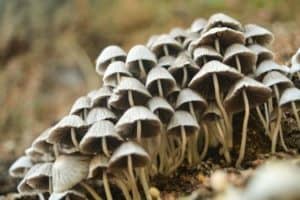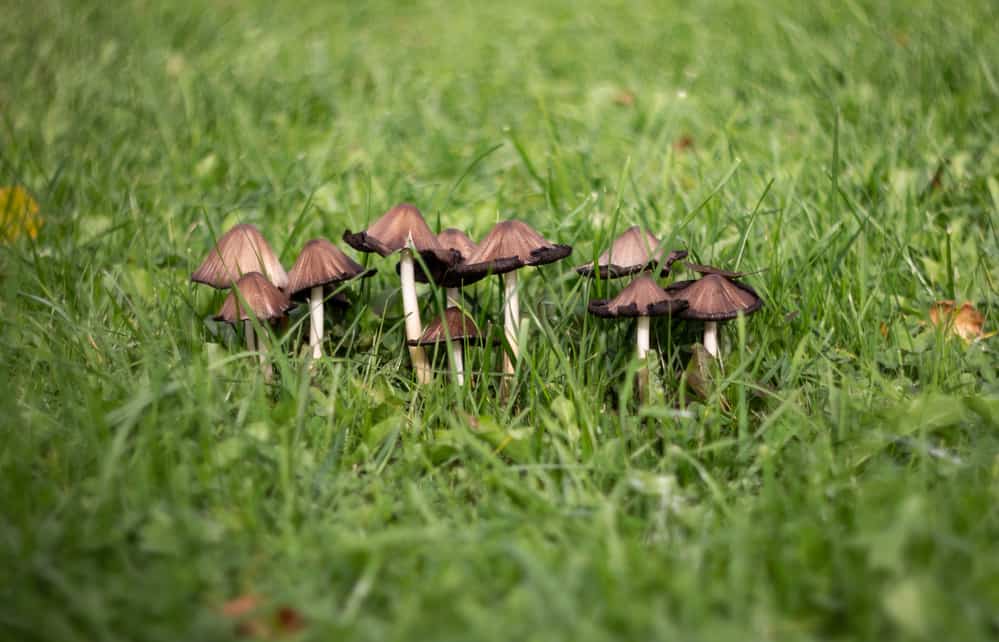
You can’t deny the versatility that comes with having a backyard besides being aesthetically pleasing. While some people commit to spending plenty of time gardening, others have a simple lawn. Some homeowners have also replaced their yard with drought-tolerant plants, whereas others have native plants to encourage wildlife and make habitat. Regardless of the type of yard you have, it’s likely to have mushrooms growing.
What causes their growth? What does it mean when they start growing on your lawn? What are the common yard mushrooms you can expect to find? How can you identify them, and which ones are safe for consumption, if any? How do you get rid of the poisonous ones? Read on to discover the answers to each question.
What You Should Know About Common Yard Mushrooms
It’s a common misconception that mushrooms are vegetables. However, what most people don’t realize is that they are a fruiting body of fungus nourished by the soil. Furthermore, mushrooms are a smaller component of a much bigger fungal organism like apples on a tree. The true mass of the structure is buried in the soil and consists of a network of mycelia.
Mycelium refers to a wealth of fibrous strands that can extend for great distances. That’s essential to keep in mind when it comes to getting rid of them. In each case, merely pulling the mushroom from the ground proves futile in ridding your backyard of the fungal structure.
Essentially, it’s the equivalent of picking out one or two apples from a large tree that’s littered with them. If you want to prevent them from re-growing in your yard, then you’ll need to deal with the problem by the root, quite literally.
Naturally, that means removing the fungal network. However, that’s no easy feat, given that the mycelium networks can be larger than you imagine.
Why Do Common Lawn Mushrooms Show Up?
Lawn mushrooms are fickle fungi that only appear when the conditions are ideal. Therefore they thrive in:
- Cloudy Weather
- Moisture
- Humidity
- Shady areas with cool temperatures
- Rich, organic matter in the soil
When your yard matches these environmental conditions, lawn mushrooms will crop up on the surface. It might be on the soil surface below your deck, under your shrubs, or a tree. They may also crop up on newly laid down sod or right in the middle of your yard.
The fungal structure, including the mushroom fruit, disintegrates and decomposes organic matter in your soil and uses the nutrients to nourish its roots. Although mushrooms aid the mycelium in this process, their sole purpose on the surface is to help scatter their spores just as they reproduce.
The mycelium and mushrooms disintegrate the organic matter like natural debris, plants, and wood, to use them as a source of food. It’s this breakdown that nourishes the mushrooms with sugar to feed the fungal structure.
What Does It Mean for Mushrooms to Show Up In Your Yard?
The presence of mushrooms can imply several things. For starters, mushrooms in your yard are usually the tell-tale signs that your soil is becoming healthier and loaded with more nutrients. As the fungus breaks down organic matter, it forms a mutually beneficial relationship with the soil.
In some instances, mushroom species might mean a plant disease spreading through your garden or yard. Pathogenic fungal organisms are the root cause of most instances of lawn disease and might cause damage such as:
- Root Rot
- Leaf Spots
- Galls
- Stem Cankers
- Wilts
- Fruit Rot
Fungal infections are issues that can ruin your vegetable garden, impact the beauty of your ornamental flowers and shrubs, and kill your grass. They can rot out the center of a living tree by scattering their pathogens.
Conversely, good fungi will protect your plant life from their pathogenic counterparts. Mushroom growth might also be a sign that you have soil with drainage problems or compacted. The water doesn’t circulate freely in a particular area and is saturated by moisture. That could open an invitation for the mushrooms to set up camp in the area.
Encountering mushrooms could also imply that your thatch is overly thick, which means it’s surpassed the recommended thickness of ½inches. An overly thick thatch results in a water pool on its surface as a result of poor drainage.
In this case, the thatch is nothing more than decaying organic matter, which is the perfect breeding ground for mushrooms, particularly if you’ve it has overgrown.

Types of Common Yard Mushrooms
Are you puzzled about the fungal fruits that crop up on your lawn? Are they edible or poisonous? Your concerns are valid, which is why this section will explore some of the most common yard mushrooms that you may notice cropping up on your property.
1. Shaggy Ink Cap
As a mushroom that grows in a tall cylindrical form, the Shaggy Ink Cap got its name due to the transformation it makes as it undergoes the preparation stage to release its spores. The mushroom goes from inky black to a clean white.
Additionally, the change occurs when you pick them. It can be to your advantage if you have the inky black fungus in your yard as it attracts and eats tiny worms known as nematodes. The tousled inky cap is edible, provided that you cook it when it’s clean white.
2. Honey Fungus
These mushrooms typically appear near the tree base, stump, or area in your yard where a tree was cut or uprooted. Honey Fungus appears as clusters of honey-colored mushrooms (which explains the name) and doesn’t appear before the host tree is dead or deteriorating.
These mushroom species are pathogenic and won’t cause root rot. While you have free rein to eat them as you please, some people experience allergic reactions such as diarrhea and indigestion after consumption.
4. False Parasol
As large, white mushrooms, the False Parasol has caps that mimic a ball sitting atop a stalk or stem. After a while, the cap develops brown patches, flatten outs, and opens. You’ll also notice scales on it. The gills of the mushroom turn grey-white.
While they may closely resemble the beloved Portabellas, they are inedible as they trigger adverse gastrointestinal problems. That’s why you should be cautious if your pets or kids are in the yard with these mushrooms.
5. Meadows
These are fungi that typically grow in backyards or lawns and are commonly mistaken for False Parasol. Despite the close resemblance, there’s one thing that sets them apart. Meadow mushrooms have brown gills. Furthermore, these species are edible and infuse a burst of flavor in a boatload of recipes as a superfood or a meat substitute.
6. Stinkhorn Fungus
These live up to their name and are layered with slimy oil that generates a putrid smell to lure in insects. Once the bugs lurk on the Stinkhorn, the slime acts as the adhesive that binds the spores to the insect’s legs.
How to Get Rid of Common Yard Mushrooms
Unless you’ve grown them, mushrooms on your lawn might not only be poisonous, posing a threat to your kids or pets, but also stick out like a sore thumb. Here are a few ways to get rid of them.
Avoid Grass-Cycling
While you may not realize, leaving the grass clippings on your lawns means you leave a source of food for mushrooms, including poisonous, inedible species. Therefore, clean up any organic debris you notice accumulating on the turf, such as sticks and leaves.
A Nitrogen Fertilizer
It will speed up the decomposition of organic debris in your yard. Boosting the decomposition rate means the debris will recycle faster. It also narrows down the duration that mushrooms have to feed on the available food source. Shortening the window will ensure the fruiting bodies remain under the surface of the soil.
Dethatch Your Lawn
A thin thatch layer can be advantageous to your grass. However, you’ll need to ensure you don’t allow it to overgrow. Dethatching a thick layer of organic material will boost the drainage and lower the water retention of your thatch.
Aerate the Soil
Doing so elevates the drainage and allows nutrients, water, and air to flow readily to tree roots, grass, and plants in your yard. Additionally, aeration will alleviate the compact soil that compels water to be drawn to the surface rather than draining into the soil.
Switch Up Your Irrigation
Spread your watering sessions across the week. For instance, if you water your grass once a week for 35 minutes, you can spread it out such that you do so twice a week for 18 minutes each to switch things up.
Resultantly, your irrigation schedule will ensure your grass still receives an adequate amount of water while avoiding soaking the soil. That will ensure you’re not saturating areas of your lawn and providing various mushroom species with the perfect habitat.
Conclusion
A plethora of homeowners cringe and sigh at the sight of wild mushrooms growing in their backyard. Granted, wildlife gardeners might smile at seeing new species. However, if you prefer not to have mushrooms growing on your lawn, you can take the measures discussed to get rid of them and prevent re-growth. You can also rope in a professional to get the job done.




